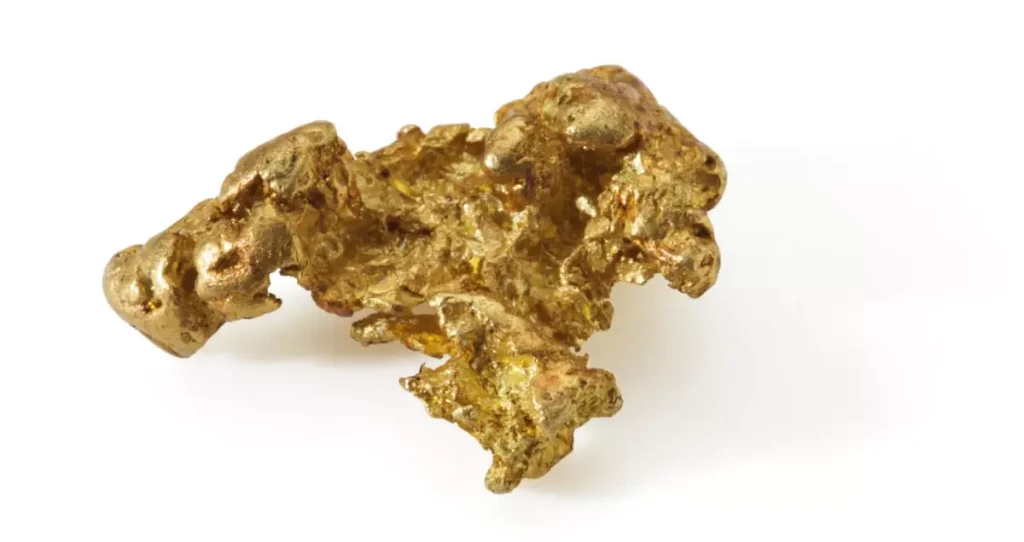Gold, a highly sought-after and valuable metal throughout the course of human history, has captivated humanity for countless centuries. Its exceptional characteristics and lasting worth have established it as an emblem of prosperity, influence, and aesthetics. However, the precise manner in which gold is created remains an enigma. The origins and intricate processes behind the emergence of this illustrious metal are as fascinating as the metal itself. In this all-encompassing piece, we explore the scientific and geological phenomena that play a role in the formation of gold.

The Cosmic Origins of Gold
Stellar Nucleosynthesis: The Birthplace of Gold
Gold’s journey begins in the hearts of stars. Through a process known as stellar nucleosynthesis, elements heavier than iron, including gold, are forged during supernova explosions. These cataclysmic events release immense amounts of energy, enabling the formation of heavy elements. As these stars explode, they scatter gold atoms into space, seeding the cosmos with this precious metal.
Neutron Star Collisions: A Gold Mine in the Universe
Recent discoveries have highlighted that neutron star collisions also play a crucial role in gold formation. When two neutron stars collide, they generate gravitational waves and expel heavy elements, including substantial amounts of gold. This cosmic alchemy adds to the richness of gold in the universe, contributing to its distribution across galaxies.
Earth’s Geological Processes
Formation in the Earth’s Crust
Once gold particles find their way to a forming planet, they become part of the planet’s geological history. Within Earth’s crust, gold is primarily formed through hydrothermal processes. Hot, mineral-rich fluids percolate through cracks and fissures in the earth’s crust, depositing gold as they cool. These hydrothermal veins are often found in regions with a history of volcanic activity.
Placer Deposits: Nature’s Gold Panning
Another significant source of gold is placer deposits. Over millions of years, weathering breaks down gold-bearing rocks, freeing the gold. Rivers and streams transport these particles, which eventually settle in gravel beds and sandbars. Miners extract gold from these placer deposits through techniques such as panning and sluicing, methods that have been used since ancient times.
Orogenic Gold Deposits: The Role of Tectonic Activity
Tectonic activity also plays a vital role in the formation of gold deposits. When tectonic plates collide and mountains form, the intense pressure and heat can cause gold to migrate and concentrate in certain areas. These orogenic gold deposits are typically found in ancient mountain ranges and are a major source of gold in the modern mining industry.
Key Takeaways: How Is Gold Formed?
- Scientists believe all the gold on Earth formed in supernovae and neutron star collisions that occurred before the solar system formed. In these events, gold formed during the r-process.
- Gold sank to the Earth’s core during the planet’s formation. It’s only accessible today because of asteroid bombardment.
- Theoretically, it’s possible to form gold by the nuclear processes of fusion, fission, and radioactive decay. It’s easiest for scientists to transmute gold by bombarding the heavier element mercury and producing gold via decay.
- Gold cannot be produced via chemistry or alchemy. Chemical reactions cannot change the number of protons within an atom. The proton number or atomic number defines an element’s identity.
Mining and Extraction Techniques
Modern Gold Mining Methods
In contemporary times, gold mining has evolved into a sophisticated industry utilizing advanced technology. Open-pit mining, underground mining, and placer mining are some of the primary methods employed. Each technique is chosen based on the geological characteristics of the gold deposit.
Chemical Extraction: Cyanidation
One of the most widely used methods for gold extraction is cyanidation. This process involves treating gold-bearing ore with cyanide solution, which dissolves the gold. The gold-laden solution is then processed to extract pure gold. While effective, this method raises environmental concerns due to the toxicity of cyanide.
Alternative Extraction Methods
To mitigate environmental impact, researchers are exploring alternative methods such as bioleaching and the use of less toxic chemicals. These innovations aim to make gold extraction more sustainable while maintaining efficiency.
Gold’s Journey Through History
Ancient Civilizations and Gold
Gold has been a symbol of wealth and power throughout human history. Ancient civilizations, such as the Egyptians, Greeks, and Romans, valued gold for its beauty and rarity. Gold artifacts, jewelry, and coins from these eras highlight the metal’s enduring allure.
Gold Rushes: Transforming Societies
The discovery of gold has sparked numerous gold rushes, transforming societies and economies. The California Gold Rush of 1849 and the Klondike Gold Rush in Canada are prime examples of how gold discoveries have led to mass migrations, the establishment of new towns, and significant economic growth.
Modern Uses of Gold
In contemporary society, gold continues to be highly valued not only for its aesthetic qualities but also for its practical applications. Gold is extensively used in electronics, dentistry, aerospace, and as a standard for monetary systems. Its unique properties, such as corrosion resistance and excellent conductivity, make it indispensable in various high-tech industries.
Conclusion
The formation of gold is a complex process that spans the cosmos and the depths of Earth. From stellar explosions to tectonic movements, a myriad of natural phenomena contribute to the creation and distribution of this precious metal. As we continue to unearth gold and harness its properties, it remains a timeless symbol of wealth and innovation.